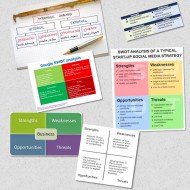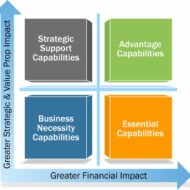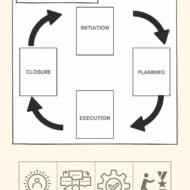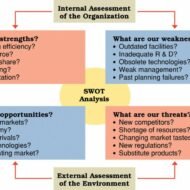Posted by Managementguru in Business Management, How To, Project Management, Startups, Strategy
on Nov 17th, 2014 | 0 comments

Startup Success Secret – Know your weaknesses “Don’t be a lone wolf. Lean on the experience and smarts of your teammates, investors, and mentors to help solve the tough problems and take advantage of the opportunities – SETH BANNON, Amicus First-time entrepreneurs are often oblivious to their own weak spots. Getting to know your strengths and weaknesses is easier said than done. Self-assess yourself by making a simple list of every business skill you think you possess. Then, add other skills that you think make a good leader/business owner. Add any additional questions you think would be helpful. Take stock of the lacunae in your skillsets, and rank which positions you need to hire first. “Know your core competencies and focus on being great at them. Pay up for people in your core competencies. Get the best. Outside the core competencies, hire people that fit your culture but aren’t as expensive to pay.” – Mark Cuban If you want your business to be successful, challenge yourself, be honest with yourself, surround yourself with talent, and watch success find you. As you reflect back on the evolution of your business, it will be clear to you that you would not have gotten to this point had you not identified your strengths and weaknesses, looking to fill your weaknesses with external talent. Example SWOT: A start-up small consultancy business might carry out the following SWOT analysis SWOT Analysis Why use SWOT Analysis? SWOT Analysis is a very effective way of identifying your Strengths and Weaknesses, and of examining the Opportunities and Threats you face. Carrying out an analysis using the SWOT framework helps you to focus your activities into areas where you are strong and where the greatest opportunities lie. Strengths: Being able to respond very quickly due to lack of bureaucracy and red tape, no need for higher management approval, etc.Being able to provide hundred percent good customer care and satisfactionStrong reputation within the marketBeing able to adapt to the changing market quicklyLittle overhead, so can offer good value to customers Weaknesses: The company has no market presence or reputationHas a small staff with a weak skill base in many areasVulnerable to vital staff attritionCash flow will be unreliable in the early stages Opportunities: Business sector HAS SCOPE FOR EXPANSION , with many future opportunities for successLocal community wants to encourage local businesses as it provides work opportunities to the people of that communityCompetitors may be slow to adopt new technologies Threats: Will developments in technology change this market beyond our ability to adapt?A small change in focus of a large competitor might wipe out any market position we...

Posted by Managementguru in Business Management, Financial Management, Marketing, Strategy
on Jul 15th, 2014 | 0 comments

What is Financial Capability? The availability, usage and management of funds have a bearing on the financial capability of an organization and ability to implement its strategies. A financial manager has to pool, deploy and allocate financial resources taking into consideration the capital or long term investments, working capital or short-term liabilities and repayment capacities. Factors that influence financial capability of an organization: 1. Factors related to source of funds: Capital structure, procurement of capital, controllership, financing pattern, working capital availability, borrowing, capital and credit availability, reserves and surplus, and relationship with lenders, banks and financial institutions. 2. Factors related to usage of funds: Capital investment, fixed asset acquisition, current assets, loans and advances, dividend distribution and relationship with shareholders. 3. Factors related to #management of funds: Financial accounting and budgeting systems, management control system, state of financial health, cash, inflation, return and risk management, cost reduction and control, and tax planning and advantages. Typical Strengths that Support Financial Capability: • Access to financial resources • Amicable relationship with financial institutions • High level of credit worthiness • Efficient capital budgeting system • Low cost of capital as compared to competitors • High level of shareholder’s confidence • Effective management control system • Tax benefits due to various government policies The examples given below show how strengths and weakness affect the financial capability of organizations: • A company faced many problems due to instability in the top management, an unfavorable public image, unfavorable government relations etc., but it had inherent strengths like a huge amount- to the tune of Rs.1000 crores invested in fixed assets which the company used for funding its diversification plans. Here we see one particular strength over-shadowing all other weaknesses which can be rectified in due course of time. • A scooter company had collected nearly Rs.1150 crores as advance for booking of scooters, but within five years, its cash position deteriorated owing to sudden and unforeseen cancellation of bookings and withdrawal of deposits, resulting in a huge interest burden. Had the company had a strong financial backup, it would have survived the trouble. Matching strengths and weaknesses with opportunities and threats requires that a firm should direct its strengths towards exploiting opportunities and blocking threats while minimizing exposure of its weaknesses at the same...

Posted by Managementguru in Decision Making, Project Management, Strategy
on May 4th, 2014 | 0 comments

In many segments that rely on a culture of project management, the project officially begins with the official approval of the project, which is not so in the development sector, where the project life more commonly begins with a Project Identification and Screening Phase. The seed of a project arises merely as an idea – a need or opportunity that is weighed, scrutinized, and eventually developed into a project which is managed through the project life cycle. The most critical question one has to ask would be ‘Are we doing the right project?’ Because a problem well understood is half done. Let us Cruise Through the Ideas in Project Identification and Screening Search for New Ideas What are the objectives? *Brainstorm to generate alternative solutions. -Emerging market trends. –SWOT analysis. -Other constraints *Shortlist candidate ideas for detailed scrutiny. Motivation Projects are a means to accomplish -Individual or family objectives -Organizational objectives -National or global objectives Project Identification begins in response to the specific need or the objectives Objectives To increase profitsTo minimize threats of lossesTo become more competitiveTo provide help after a disasterTo train people in a new areaTo reduce pollution in DelhiTo become a successful entrepreneur Download this project planner template to effectively conduct your projects 👇 Minimal-and-Elegant-Project-Planner-TemplateDownload Swot Analysis A tool that detects the strengths, weaknesses, opportunities and threats of an organization. In particular, SWOT is a basic, straightforward model that measures what an organization can and cannot do as well as its probable opportunities and threats. The method of SWOT analysis is to take the information from an environmental analysis and distinguish it into internal (strengths and weaknesses) and external issues (opportunities and threats). Once this is over, SWOT analysis determines what may assist the firm in accomplishing its objectives, and what obstacles must be overcome or minimized to achieve desired results. • Objectives • Experience • Resources • Environment pressures -Keeping these factors in mind an analysis of strengths, weaknesses , opportunities and threats is made to identify and select suitable projects. STRENGTHS • Experience and expertise • Financial position • Capital raising capability • Industrial contacts • Foreign collaborations WEAKNESSES • Newer unfamiliar technologies • Inability to raise huge investments • Lack of experience • Lack of trained personnel • Inability to forecast market trends OPPORTUNITIES • Emerging technologies • New products with new markets • New processes with better features • Special financing schemes • Government and other incentives THREATS • Competitors • Poor state of the economy • Outdated technology • Unprofessional management skills • New products and services BRAINSTORMING • A good means to generate new project ideas • Focus on uninhibited participation by a group • Listing of ideas without suppressing creativity at source • List of ideas subjected to screening and evaluation subsequently Download this meeting notes planner template to effectively conduct your project meetings 👇 Pink-Yellow-Gradient-Project-Meeting-Notes-PlannerDownload SCREENING OF IDEAS Poor Fair Good Vgood Excellent (1) (2) (3) (4) (5) Weight •Cost * 20% •Risk * 30% •Return * 40% •Hazard * 10% •(score = 2×0.2+3×0.3+4×0.4+2×0.1= 3.1) CRITERIA IN SCREENING PROJECTS • Investment • Rate of return • Risk • Likely profit • Payback • Similarity to existing business • Expected life • Flexibility • Environment impact • Competition Let us look at the following example – Reducing Vehicular Pollution in Delhi Ideas Generated in Brain Storming Restrict registration of new vehiclesEnforce strict emission regulations for vehiclesBan diesel run vehicles on roadIntroduce MRTS – Mass Rapid Transport System for the cityEncourage use of car poolsGrow more trees/ green belts in the cityDeclaring no traffic zones in the cityBan vehicles with an age of ten or more years from plying on the roads These and...

Posted by Managementguru in Business Management, Decision Making, Marketing, Organisational behaviour, Principles of Management, Project Management, Strategy
on Mar 22nd, 2014 | 0 comments

What is Swot Analysis and how to do a Swot Analysis Perfectly? Strategy formulation is an integral part of management decision making as strategies come to our risk whilst there are fluctuations in the external environment. A management expert will tell you rightly that strategies are not templates constructed for a specific purpose as they are formulated based on broad policies of a particular organization and have to be in tandem with the enterprise objectives. Nevertheless a CEO will find himself in situations where he might be forced to make instantaneous strategic decisions irrespective of the nature of the problem, only considering the magnitude of the situation. SWOT AND SYNERGY EQUATIONS Significance of SWOT Analysis: The analysis subjectively evaluates the impact of internal and external factors for a business objective. Internal processes and resources are considered strengths and weaknesses (S and W, respectively). External factors affecting the business and industry are considered opportunities and threats (O and T, respectively). An evaluation of these factors develops a strategic perspective that includes the competitive landscape and current market conditions. Need for Alternate Strategic Decisions: Lately we are witnessing a number of multinational giants going in for Joint Ventures and Collaboration. What is the root cause for such alternate strategic decisions? What happened to the value of the “Brand Image” of the organization or the “Profit Margins” which kept the company going? Well, this is where we have to look into the structure of their operations and most importantly the modality formulated to reach their ultimate objectives. Definitely, there would have been a big dent somewhere in the top management notch, failing to see through the obvious. Market Research is Inevitable for Decision Making: Situations change and we even experience this in our day to day lives, where decision making becomes very difficult at times; further we push the situation to extreme limits and make it worse. Planning is the very basis of our life that facilitates smooth functioning and change for the better. In big corporates, decision making is by and large the responsibility of the top management and they pass on the instructions down the line. It is but natural that the chairman and board of directors should make all the important decisions as they are the potential capital investors. Market research is another area that deserves mention at this juncture without which business persons cannot think of kicking off trade as it will be a sheer waste of money and time. Understanding the pulse of the market and your target customers always help in shaping up the right strategies concerning New product launch Consumer Preference Price determination Product modification etc., Test marketing is one of the strategies followed by many multi national companies while they launch their new products or wish to introduce variations in their product range. THE IMPORTANCE OF DECISION-MAKING Strategies are based on organizational policies and policies have to confer to the objectives and goals of the organization. The top management team should be a set of professional experts who should be able to gauge the existing as well as future trends of the market based on political, legal, environmental and economic changes and sketch their action plans accordingly. Decentralising decision making and delegating the authority as and when needed are also fine strategies to gain co-operation from your employees and to bring co-ordination in the entire business...








